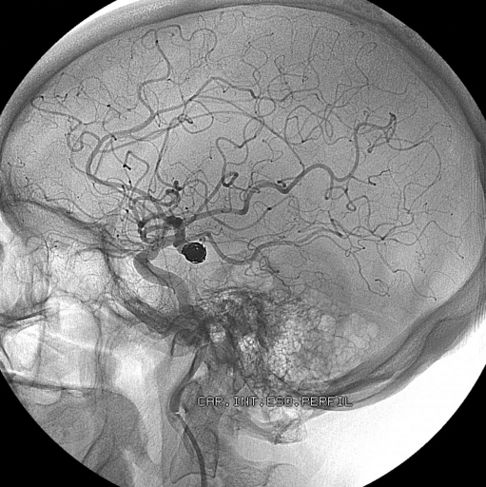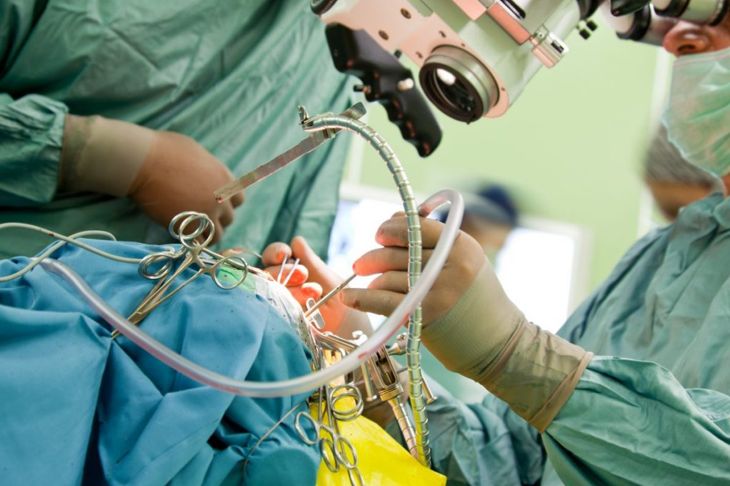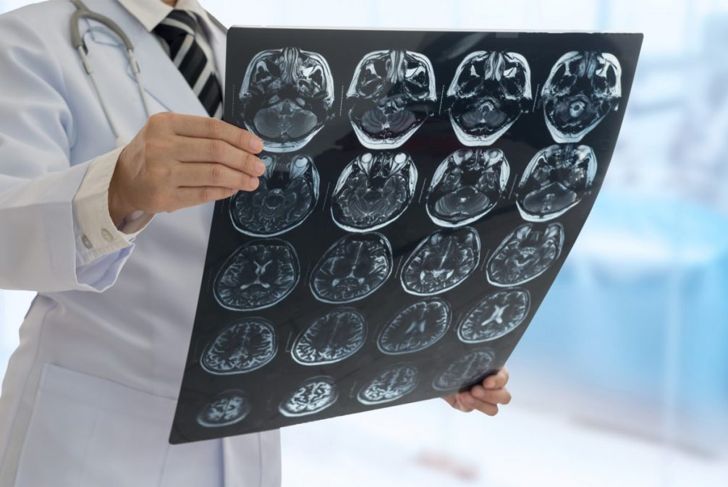A brain aneurysm is a bulge in a blood vessel. It can resemble a berry hanging from a stem. Aneurysms can rupture, causing bleeding in the brain, which can be life-threatening. In most cases, a person does not even know he or she has a brain aneurysm, as they don’t cause any symptoms; a doctor usually discovers an aneurysm while testing for other conditions.
What Are the Symptoms of a Ruptured Aneurysm?
The main symptom of a ruptured brain aneurysm is a sudden and excruciating headache. Some people also experience nausea, vomiting, confusion, loss of consciousness, light sensitivity, stiff neck, blurred vision, and seizures. A ruptured brain aneurysm is extremely dangerous, so it is vital to receive medical care as quickly as possible after symptoms begin.
How Is a Brain Aneurysm Diagnosed?
After you start experiencing symptoms, a doctor may be able to diagnose an aneurysm. It is essential to make an appointment with your doctor if you experience a sudden and severe headache or any other symptoms related to a brain aneurysm. In the case of an emergency room visit, the patient will immediately undergo diagnostic testing to determine if he or she has an aneurysm and if it has ruptured. These tests will be able to identify any bleeding in the space between the brain and its lining.
What Are the Risk Factors for a Brain Aneurysm?
Some risk factors of brain aneurysms may be present when an individual is born, while others develop with age. Factors present at birth include a family history of brain aneurysms, polycystic kidney disease, inherited connective tissue disorders, an abnormally narrow aorta, and cerebral arteriovenous malformation. Later in life, the risk of an aneurysm can increase due to alcohol, drug, and cigarette consumption, smoking cigarettes, high blood pressure, and old age, in general.
What Kind of Treatment Is Available for Ruptured Aneurysms?
If a medical professional discovers a ruptured aneurysm, the patient will undergo surgery to repair the bleed. One such operation is surgical clipping, which aims to close off an aneurysm and stop the bleeding. The surgeon will remove a portion of the skull to expose the brain and find the aneurysm. He or she will then put a metal clip where the bleeding has occurred to stop it. Another surgery, endovascular coiling, is less invasive and involves placing a catheter into an artery in the groin area and pushing it through to the brain to the aneurysm. The metal coil disrupts the flow of blood to an aneurysm.
What Kind of Treatment Is Available for Unruptured Aneurysms?
Endovascular coiling and surgical clipping may also be used to treat an unruptured aneurysm. Additionally, the doctor may prescribe pain relievers for the headaches that often happen in conjunction. Risk factors such as your family history, age, and health will help determine treatment as well as the size and location of an aneurysm.
How Long Is the Recovery Time if Surgery Is Required?
The typical recovery time for brain aneurysm surgery is between four and six weeks. The patient must stay in the Intensive Care Unit for close monitoring. Patients are usually in the ICU for a few days before being discharged, and will then have to avoid or take care in certain activities. Following brain surgery, people often feel tired for up to twelve weeks. It is essential to allow the body to recover from such an extensive surgery by getting a lot of rest and following the doctor’s orders.
What Are the Complications?
When a brain aneurysm ruptures, it can kill cells in the brain even if the bleeding only lasts for a few seconds. When bleeding occurs, it will also interfere with the amount of oxygen the brain receives. In turn, there is an increase in pressure on the brain. It is possible for bleeding to occur again after surgery. Vasospasm may occur in some cases, causing the blood vessels in the brain to narrow. This condition can cause an ischemic stroke and damage to these vessels. Another complication is hyponatremia, which can cause a drop in sodium levels, leading to permanent brain damage. The last complication is hydrocephalus, which occurs when an aneurysm ruptures. Hydrocephalus can block cerebrospinal fluid from flowing properly, resulting in an excess amount of fluid in the brain.
Is It Possible to Develop Another Aneurysm?
Yes, it is possible to have another aneurysm after a first has been corrected or stopped. The Brain Aneurysm Foundation says the chances of reoccurrence are between ten and 15 percent. The odds of it happening again are higher for people under the age of fifty, and anyone with health conditions that may cause aneurysms also increase risk.
When Should You See a Doctor?
You should always see a doctor if you are experiencing any troubling symptoms. It is essential to have regular testing done if you have an aneurysm or a family history of them. If you develop a sudden, searing headache, call emergency services immediately. Talk to your doctor about aneurysm treatments. There are also ways to stay healthy to help avoid the rupture of an aneurysm. Regular screening will ensure a diagnosed brain aneurysm isn’t posing any immediate risks to one’s health.
Who Should Get Brain Aneurysm Screenings?
Anyone who has one or two parents who have had a brain aneurysm should undergo regular screenings. The physician may recommend diagnostic testing to ensure the brain is healthy. He or she may also recommend screening for individuals with congenital health problems that can cause brain aneurysms, such as a default in the brain artery wall or issues with circulation. A CT scan, MRI, cerebrospinal fluid test, and cerebral angiogram can identify an aneurysm.

 Home
Home Health
Health Diet & Nutrition
Diet & Nutrition Living Well
Living Well More
More




















